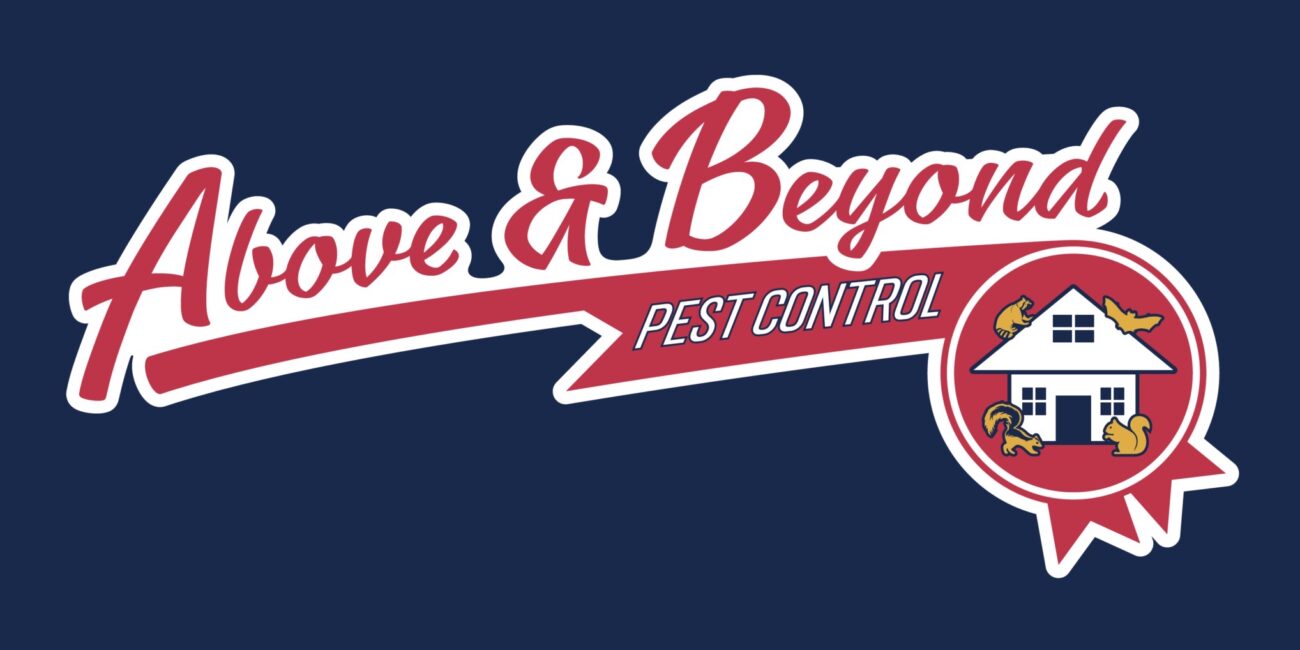What Are Common Raccoon Intrusion Indicators?
Are you hearing strange noises at night or finding unusual marks around your property? Raccoons, being clever omnivores, often seek shelter in crawl spaces or attics, and they can create significant disturbances. This article will highlight key indicators of raccoon intrusion, including recognizable noises, physical signs, and entry points such as flues. By understanding these signs, homeowners can take timely action to address potential infestations, ensuring their homes remain safe and secure from these intrusive creatures, as well as preventing encounters with other wildlife like opossums.
Recognizing Noises Indicative of Raccoon Activity
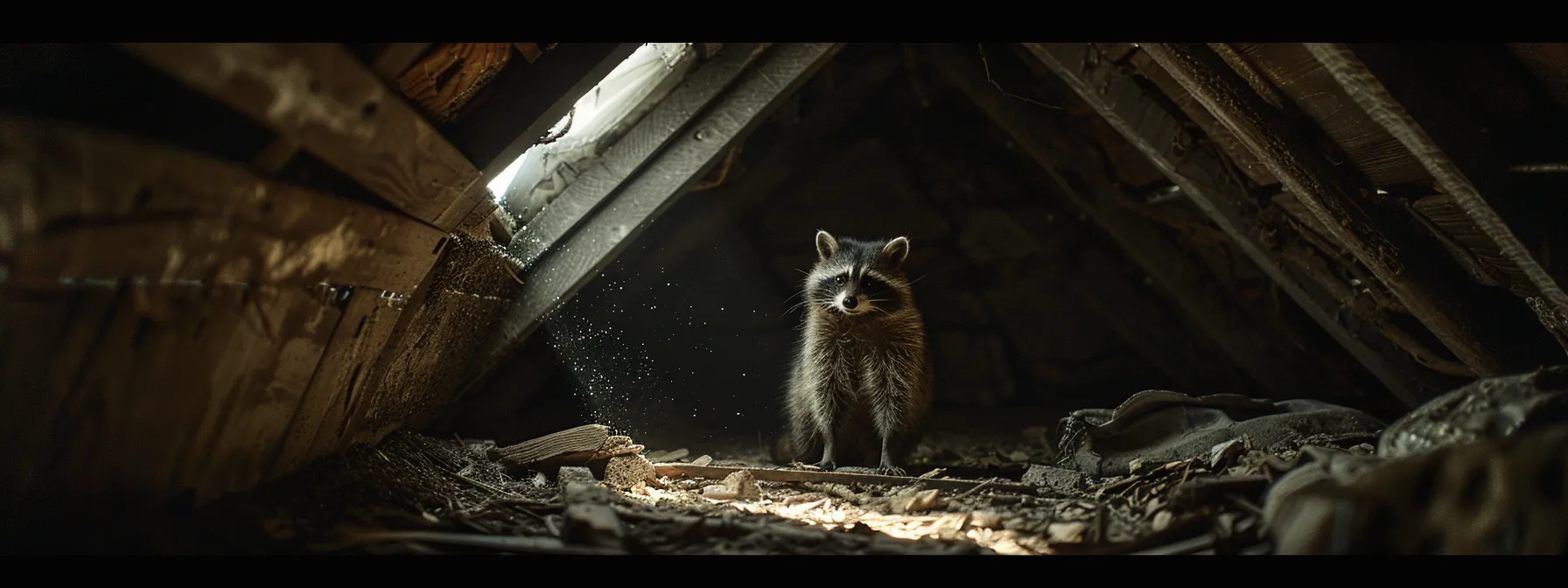
Distinctive sounds from the attic can signal the presence of raccoons, especially during nighttime hours when these creatures are most active. Scratching and scuffling sounds often indicate that a raccoonspecies may be seeking shelter. Recognizing these noises is essential to mitigate potential water damage and other risks associated with wildlife intrusions, particularly in urban areas.
Distinctive Sounds From the Attic
Homeowners may hear distinctive noises from the attic that indicate raccoon activity, particularly during dusk and dawn when these animals are foraging for food. Sounds such as scratching, pawing, and scuffling can highlight the presence of raccoons seeking shelter. Understanding these auditory cues is essential, as ignoring them can lead to increased stress within the household and the need for more comprehensive pest control solutions.
In many cases, these unsettling sounds signal that raccoons have found an entry point into the home, which can lead to further complications, including potential damage to insulation and electrical wiring. Prompt animal removal is crucial to minimize greater issues, such as the risk of flea infestations or harmful droppings. Recognizing and addressing these noises early can prevent unnecessary expenses and create a safer environment for all residents.
Noises During Nighttime Hours
Noises heard during nighttime hours can be a clear indicator of raccoon activity in the attic, often involving scratching and thumping sounds. Homeowners should conduct regular inspections to identify any areas where debris may be accumulating or where raccoons could gain entry. Immediate attention to these noises can prevent further pest complications and protect the structural integrity of the home.
When homeowners hear these unsettling noises after dark, it often signifies that raccoons are foraging or nesting within the attic space. These disturbances can lead to significant issues, such as damage to insulation and potential fire hazards due to chewed electrical wiring. Addressing the source of these noises with swift action is essential for maintaining a safe environment and reducing repair costs associated with wildlife intrusions.
Scratching and Scuffling Sounds
Scratching and scuffling sounds in the attic can serve as significant indicators of raccoon activity, particularly within urban wildlife habitats. These noises often highlight the balance of nature being disrupted, as raccoons search for nesting sites in residential areas. The persistence of these sounds can signal potential aggression from raccoons feeling threatened or cornered, making it vital for homeowners to address the situation promptly to maintain cleanliness and safety in their living environment.
The presence of scratching and scuffling can lead to serious consequences if left unchecked, including damage to insulation and compromised structural integrity. Homeowners are encouraged to remain vigilant and recognize that these noises are not merely inconveniences but critical warnings of raccoon‘s intrusion. Taking action to mitigate the issue can prevent further escalation and preserve the harmony between humans and wildlife, ensuring a safer household for all residents.
As the sounds of raccoons echo in the night, attention turns to the clues they leave behind. Observing these physical signs reveals much about their presence and intent.
Observing Physical Signs of Raccoon Intrusions
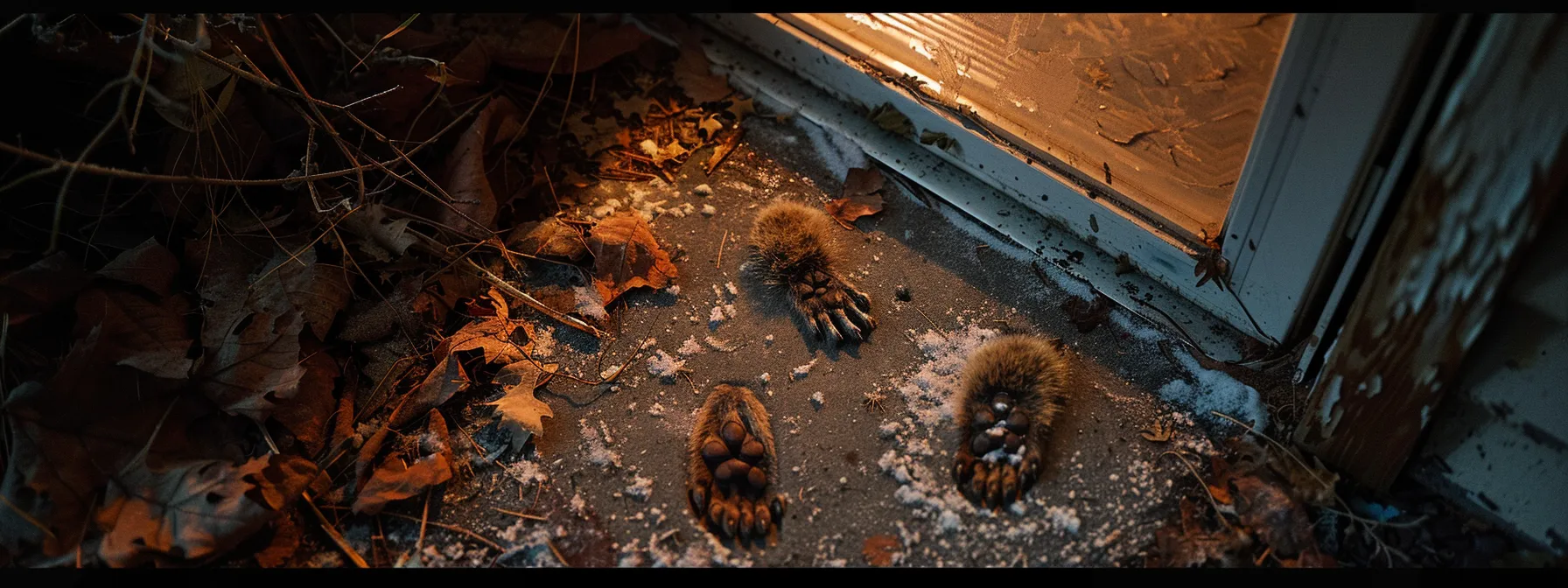
Tracks and paw prints around entryways can reveal raccoon presence, a direct consequence of urban sprawl. Scattered food remnants indicate their foraging habits, while damaged insulation or wiring highlights the risks associated with their intrusion. Understanding these physical signs is vital for homeowners seeking raccoon removal services, allowing for prompt pest removal and a safer living environment.
Tracks and Paw Prints Around Entryways
Tracks and paw prints around entryways can serve as clear evidence of raccoon activity. Homeowners should be vigilant about observing these signs, especially near trash cans or gardens where raccoons may be searching for food due to their varied diet. Not only do these footprints indicate the presence of raccoons, but they can also help distinguish between other wildlife, such as squirrels, ensuring that homeowners can implement appropriate raccoon control measures effectively.
In addition to tracks, the presence of a distinct ammonia-like scent near entry points can signal raccoon habitation, as their urine often smells strongly due to their high protein diet. Observing these physical markers allows homeowners to assess the situation swiftly and take action before the raccoons potentially cause damage to insulation or wiring, which could lead to complications similar to those seen with termite infestations. Prompt recognition and response are essential for maintaining a safe and secure living environment.
Scattered Food Remnants
Scattered food remnants around the property can serve as a clear sign of raccoon activity, particularly near dumpsters or trash bins. These nocturnal animals are opportunistic feeders and will often rummage through refuse in search of readily available food sources. Homeowners should remain vigilant, as the presence of these remnants not only attracts raccoons but may also signal risks associated with wildlife intrusion, including potential disease transmission.
One specific concern related to raccoon presence is baylisascaris procyonis, a raccoon roundworm that can pose health risks to both pets and humans. When raccoons forage for food and leave behind fragments, they may also deposit contaminated droppings in the vicinity. Engaging wildlife removal services promptly can help mitigate these risks by addressing the source of the problem and ensuring the safety of the living environment.
Damaged Insulation or Wiring
Damaged insulation or wiring within a home can serve as a strong indicator of raccoon intrusions. These creatures are known to tear apart insulation and chew through electrical wires, which can lead to significant safety risks, including fire hazards due to exposed wiring. The presence of insulation debris scattered within the attic or around entry points not only suggests a raccoon has established a nest but also highlights the urgent need for a professional raccoon removal service to mitigate potential dangers associated with their presence.
Homeowners should be particularly cautious, as compromised wiring can result in not only property damage but also health risks related to wildlife, including diseases such as rabies and leptospirosis. Raccoons possess a keen sense of smell, which may lead them to nesting sites close to homes, further increasing the likelihood of infestations. Addressing these issues promptly with effective pest control measures not only preserves the integrity of the home but also safeguards all residents from health hazards posed by wildlife intrusions.
The signs of raccoons are often visible, but their presence carries a distinct scent. Recognizing these odors can reveal much about their habits and help in managing their unwelcome visit.
Identifying Odors Associated With Raccoon Presence
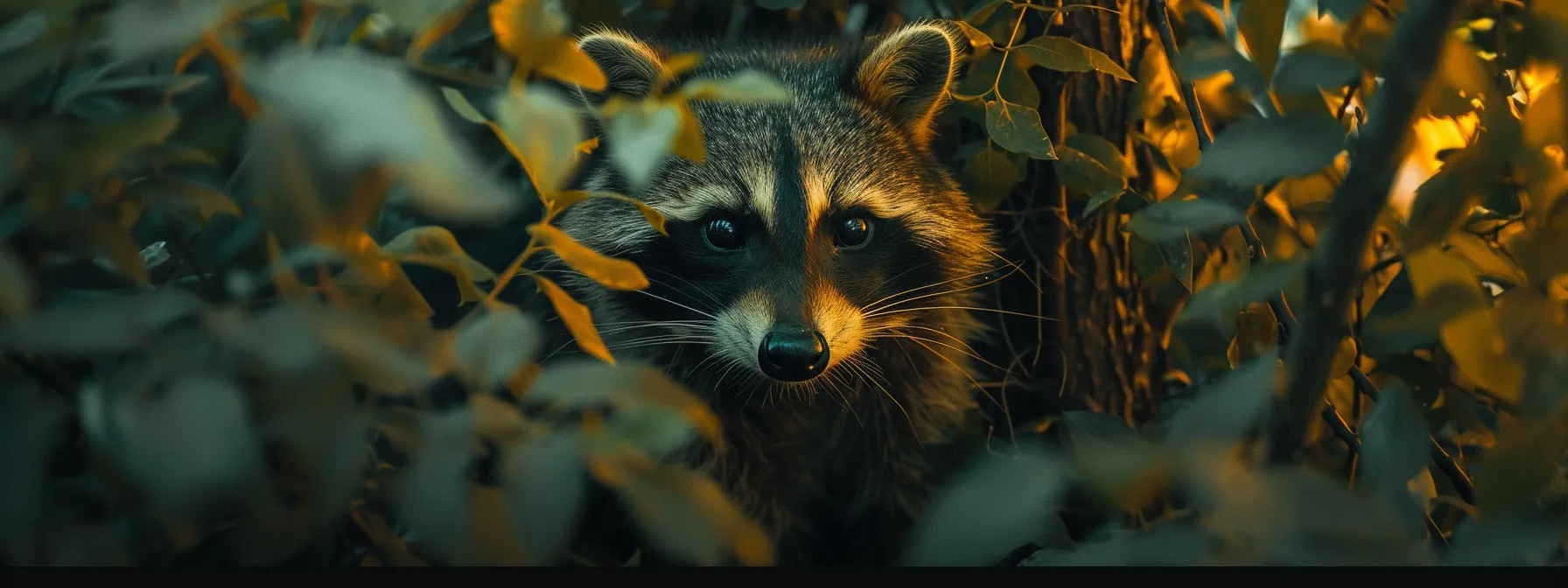
Recognizing odors associated with raccoons is crucial for effective pest management. The unmistakable smells of urine and feces often indicate that these scavengers have made themselves at home. Additionally, unusual animal scents within living spaces can signal the need for prompt action. Understanding these odors can help homeowners identify raccoon presence and take appropriate measures to ensure a safe environment.
Smells of Urine and Feces
The distinctive smells of urine and feces can indicate a raccooninfestation in residential areas. Raccoonurine often carries a pungent odor due to its high nitrogen content, while their droppings may have a strong, unpleasant scent. Homeowners should be aware that these odors not only signify the presence of raccoons but also alert them to the potential risks associated with ecological imbalances and contamination from wildlife.
Identifying raccoon-related odors early allows homeowners to take swift action for raccoon removal and mitigate health risks, particularly those linked to the feces that may carry parasites. Ignoring these signs may lead to more extensive infestations and costly repairs. Ensuring proper waste management, such as secure composting methods, can help reduce raccoon attraction and encourage a safer environment for all residents.
Unusual Animal Scents in Living Spaces
Unusual animal scents within living spaces often suggest the presence of raccoons and can indicate their intelligence in navigating household environments. Homeowners may notice these odors particularly near areas such as the fireplace or basement, where raccoons may choose to nest, seeking warmth and shelter. Recognizing these scents is vital, as they signal not only the possible intrusion of raccoons but also the potential for damage to insulation, wiring, and personal belongings.
The behavior of raccoons, including their tendency to mark territory, can also lead to noticeable odors that homeowners should not ignore. If distinct animal scents are detected, it is critical to investigate further to ascertain whether rodents or other wildlife have made their way into the home. Addressing these signs early can prevent complications related to health risks and property damage, ensuring a safer and more secure environment for all residents.
Raccoon scents linger in the air, signaling their hidden presence. To keep these intruders at bay, it is crucial to identify how they gain entry into homes.
Spotting Entry Points for Raccoons
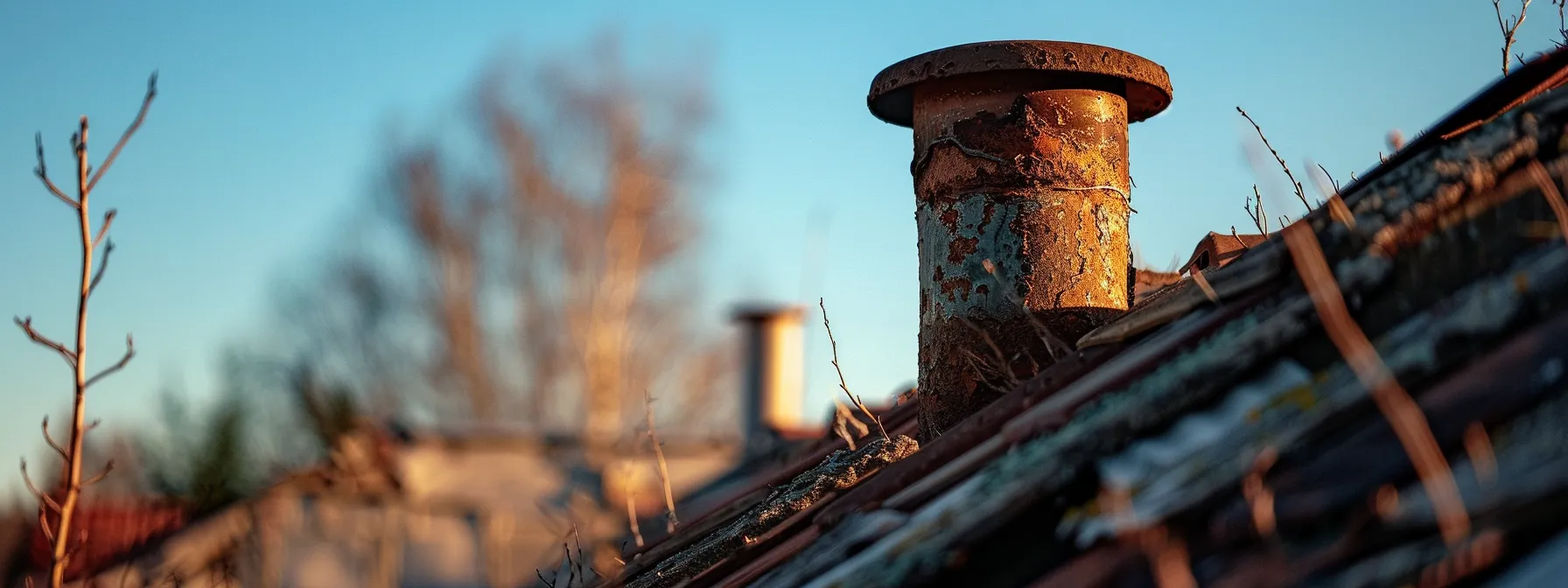
Inspecting roof vents and gaps is essential for identifying potential entry points for raccoons. Homeowners should also examine chimneys and exhaust pipes, as these areas can serve as access routes. Additionally, checking pet doors and other access points helps prevent unwanted wildlife intrusion. These practical assessments are vital for maintaining safety and preventing injury while ensuring warranty coverage remains intact.
Inspecting Roof Vents and Gaps
Inspecting roof vents and gaps is crucial for homeowners aiming to prevent raccoon intrusions. Raccoons can easily find their way into attics through these openings, leading not only to property damage but also safety concerns, particularly regarding the risk of diseases like canine distemper and bacteria transfer. Regular check-ups can help identify these vulnerabilities, allowing homeowners to secure their homes effectively and reduce the likelihood of wildlife issues.
Homeowners should prioritize sealing any gaps or damaged vents to discourage raccoons and other wildlife, like skunks, from entering the property. Engaging professional trapping services can provide additional assistance by offering tailored solutions for raccoon removal, ensuring a safer and more secure living environment. Taking these proactive measures not only protects the property but also contributes to the overall health and safety of the household.
Examining Chimneys and Exhaust Pipes
Chimneys and exhaust pipes can serve as significant entry points for raccoons, offering easy access to attics if not properly secured. Homeowners must examine these areas closely to identify any gaps or damages that might allow wildlife intrusion. Ignoring these potential openings may lead to increased risks associated with home safety and compromise the ecosystem balance in the neighborhood, especially if raccoons begin to consume pet food or invade the lawn in search of shelter.
Regular inspections of chimneys and exhaust pipes are essential for homeowners seeking effective wildlife removal solutions. If raccoons make their way into these structural areas, they can create hazardous conditions, such as blockages that lead to chimney fires or damage to appliances linked to exhaust systems. By taking proactive measures to secure these points, residents can minimize the likelihood of raccoon activity and protect their property from the dangers associated with wildlife intrusions.
Checking Pet Doors and Other Access Points
Pet doors can serve as convenient access points for raccoons if not properly secured. These openings may unintentionally extend an invitation to wildlife, allowing raccoons to enter homes and establish their habitat, often leading to property damage and health risks. Homeowners should frequently inspect pet doors to ensure they close securely and do not have any gaps that could accommodate curious raccoons.
In addition to pet doors, other less obvious access points such as window screens and damaged door frames also require thorough checks. Raccoons are known for their ability to exploit any weakness, which can increase their chances of making a home in attics or basements. By identifying and addressing such vulnerabilities, homeowners can effectively reduce the risk of raccoon intrusions and maintain a safer living environment.
Once entry points are found, the next step is to understand the signs of raccoons around you. Keeping an eye on your outdoor space reveals much about their presence and habits.
Monitoring Your Outdoor Environment for Raccoon Signs
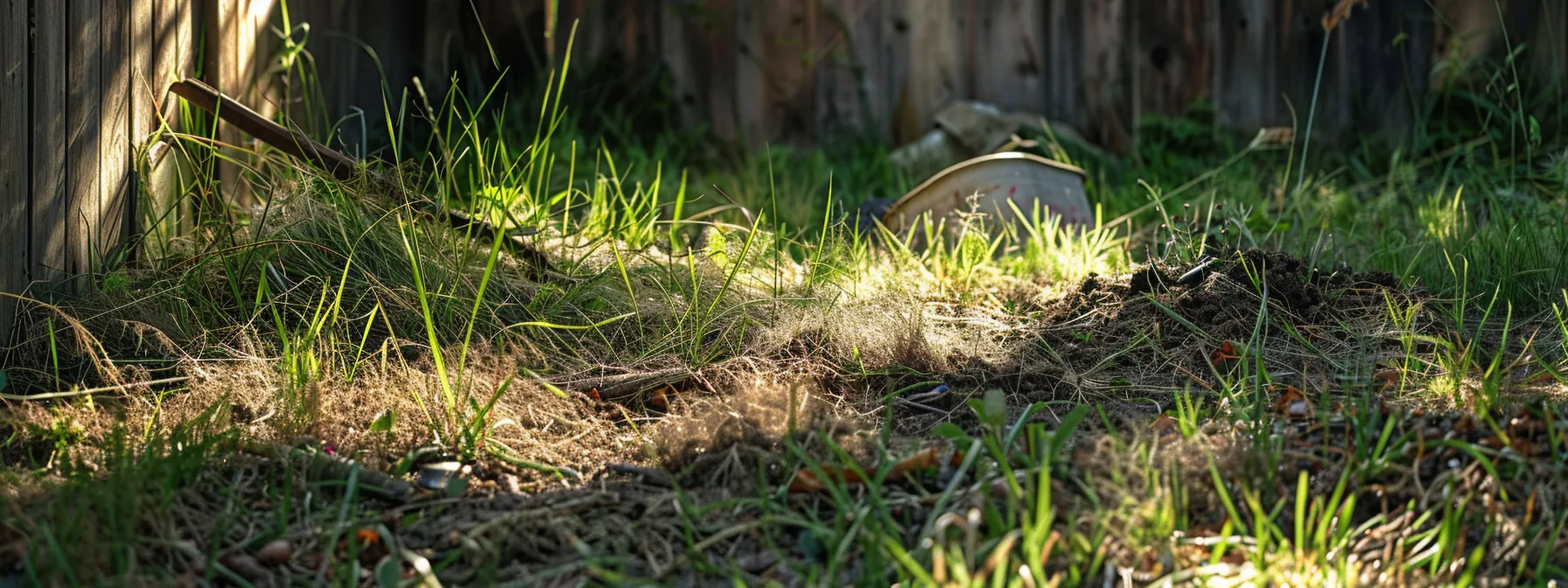
Homeowners should be vigilant when monitoring their outdoor environment for signs of raccoon activity. Common indicators include signs of digging around the property, which may reveal their foragingbehavior. Additionally, nesting materials in yards and gardens can signal potential raccoon habitation. Unusual activity near trash bins often points to their scavenging habits, highlighting the need for prompt attention to these issues.
Signs of Digging Around Your Property
Signs of digging around the property can serve as clear indicators of raccoon activity, particularly in gardens and lawns. Raccoons often dig for food sources such as insects, roots, or even garbage, leaving noticeable disturbances in the soil or mulch. Homeowners should monitor these areas closely, as persistent digging can lead to damage to landscaping and attract more wildlife, creating additional problems.
Beyond surface disturbances, raccoon excavation can also lead to deeper issues, including burrows that compromise the structural integrity of outdoor spaces. For instance, if homeowners notice consistent digging under fences or around foundations, it may signal that raccoons are seeking shelter. Addressing these signs promptly can prevent further intrusions and protect the overall health and safety of the home environment.
Nesting Materials in Yards and Gardens
Nesting materials in yards and gardens can serve as telltale signs of raccoon presence. Homeowners should look for items such as shredded leaves, twigs, and other organic debris that raccoons may collect to create comfortable nests. Recognizing these indicators early can facilitate timely action to deter raccoons from establishing a permanent habitat near homes, minimizing potential property damage and health risks.
It is essential for homeowners to maintain regular checks for nesting materials, especially in secluded areas like beneath bushes or in shed corners. By keeping gardens tidy and removing potential nesting sites, homeowners can significantly decrease the likelihood of raccoon invasions. Proactively addressing such conditions can help ensure a safe and secure environment for residents, while also protecting external property from the disruptions caused by raccoons.
Unusual Activity Near Trash Bins
Unusual activity near trash bins is a significant indicator of potential raccoon presence. Homeowners may notice disturbances such as overturned garbage cans or scattered food remnants, suggesting that raccoons are scavenging for easy meals. Taking note of these signs is essential, as raccoons are opportunistic feeders, and their presence can lead to not only property mess but also health risks associated with wildlife intrusion.
Acting promptly when observing unusual behavior around trash bins can help mitigate further raccoon problems. Homeowners should secure garbage containers with tight-fitting lids and store trash in areas that minimize access for wildlife. Implementing these preventive measures not only protects property but also fosters a safer environment by reducing the likelihood of raccoon habitation.
You have kept a watchful eye on your surroundings, noting signs that hint at raccoon activity. Now, it’s time to take decisive steps to address these indicators and protect your home.
Taking Action After Identifying Raccoon Indicators
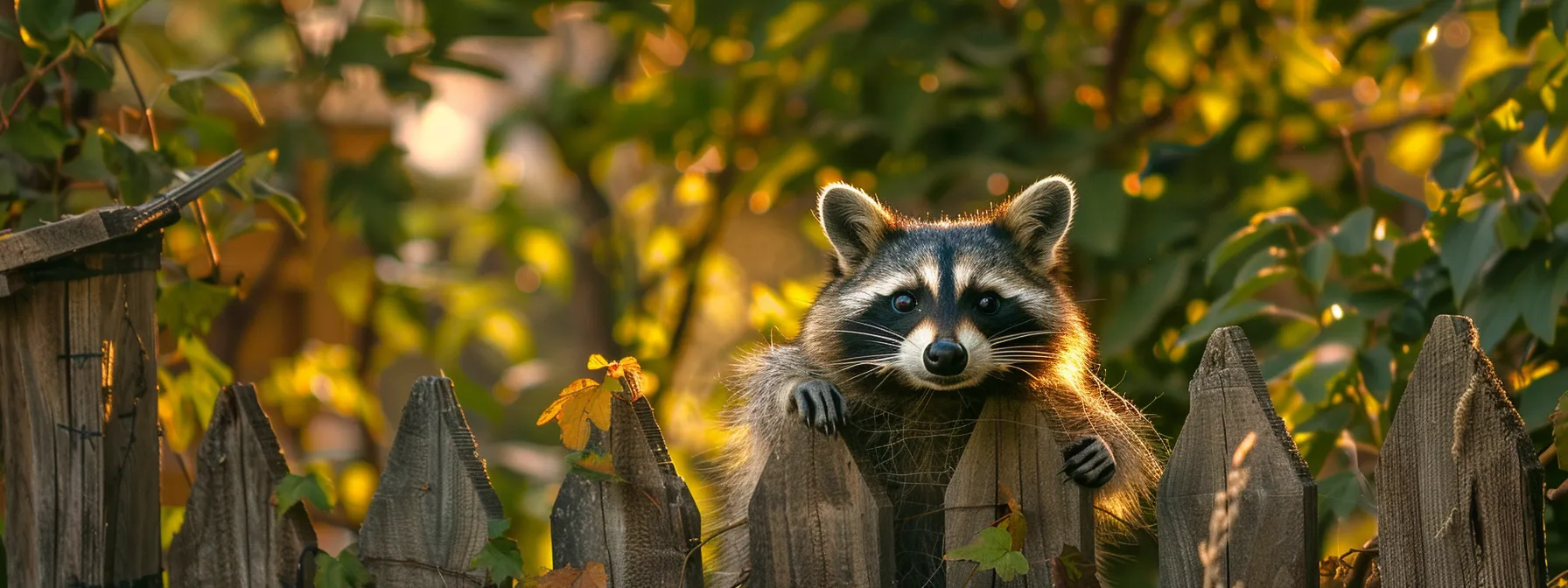
Documenting findings is the first step in addressing raccoon intrusion indicators. Homeowners should thoroughly note any signs of activity, including noises and physical evidence. Subsequently, contacting animal control or wildlife services can provide professional assistance in removal. Lastly, planning for preventive measures will help secure the home against future wildlife intrusions, ensuring a safer living environment for all residents.
Documenting Your Findings
Documenting findings related to raccoon activity is an essential step for homeowners in addressing potential intrusions. Keeping a detailed record of noises, physical signs, and any damage observed can provide valuable information for professionals engaged in wildlife removal. This thorough approach not only aids in determining the extent of the issue but also assists in developing effective solutions to mitigate future risks associated with raccoons.
Homeowners should consider noting the time and nature of the disturbances, as well as specific locations where evidence is found, such as tracks or foraging signs near trash receptacles. This documentation will equip wildlife control specialists with the necessary context to identify the level of infestation and recommend targeted removal strategies. Taking these proactive measures helps ensure a secure living environment while minimizing property damage and health hazards linked to raccoon presence.
Contacting Animal Control or Wildlife Services
When homeowners identify signs of raccoon activity, such as scratching noises or visible tracks, contacting animal control or wildlife services becomes a necessary step. These professionals possess the expertise and tools required to safely and humanely remove raccoons from residential spaces, ensuring the well-being of both the animals and the residents. By providing detailed information about the observed indicators, homeowners facilitate a quicker and more effective response from the wildlife specialists.
Engaging with animal control or wildlife services not only aids in the immediate removal of the raccoons but also addresses potential health concerns and property damage associated with their presence. These services can conduct thorough inspections to identify entry points and advise on preventative measures, guiding homeowners in safeguarding their property against future intrusions. Taking this proactive approach not only resolves current issues but fosters a safer living environment for all residents long-term.
Planning for Preventive Measures
To effectively prevent raccoon intrusions, homeowners must implement strategic measures that address potential entry points and attractants. Sealing gaps around vents, chimneys, and pet doors is a critical step in safeguarding the home from these urban wildlife intruders. Installing raccoon-proof closures and ensuring all access points are secure can significantly reduce the likelihood of future infestations.
Moreover, maintaining a clean outdoor environment plays a vital role in deterring raccoons. Securing trash containers with tight-fitting lids and removing pet food from outdoor areas can minimize scavenging opportunities for these opportunistic feeders. By taking proactive steps to eliminate food sources and reinforce barriers, homeowners can create an unwelcoming space for raccoons, thereby enhancing their home’s safety and integrity.
Conclusion
Recognizing common raccoon intrusion indicators is essential for maintaining a safe and secure home environment. Homeowners should be vigilant in observing sounds, physical signs, and odors associated with raccoons, as these can signify serious issues that require prompt attention. Taking immediate action not only prevents property damage but also mitigates health risks linked to wildlife presence. By implementing preventive measures and engaging professional services when necessary, homeowners can effectively safeguard their living spaces from raccoon intrusions.
